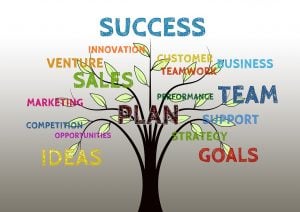SALES in ABUNDANCE
Is exceptional service anticipation?
The waiter stands there looking at you hopefully. Pleasantly he suggests an entrée you had not considered. ‘Let me make your evening, this is one our finest dishes.’ You study his face. The ambience of the restaurant is a delight, and with a grateful nod you confirm his suggestion. It is agreed that you will consider the main order at your leisure. It is your first visit and there is no need to think too hard over an untried menu. You want to be spoilt with an abundance of service, to have a wonderful experience. The waiter returns with a complimentary glass of house red, anxious to have your opinion. It is anticipating the guests need for being special and the philosophy of sales in abundance.
What opening question can you use?
You meander through a shopping mall, you have things to do so your pace is brisk. Quite unexpectedly a happy sales rep bounces in your way and suggests a moment to refresh in the latest aftershave. The salespersons introduction launches into a question ‘Can you help me, I can’t figure out where I have experienced this scent before, its exquisite?’ Deliberately you engage in the essence, enjoying the enthusiasm and the idea that you could help figure this out? It is an extravagant scent.
‘Not quite what you expected is it?’ the sales rep confirms. Perspectives are exchanged, you agree it reminds you of something? Memories are siphoned-off, convinced there is something personal worth remembering. The resistance to purchase may not be considered? Something unique, just for me? The essence does remind me of? What opening questions can you use in your sales dialogue?
This is where soft skill training companies can come in handy with workshops on emotional intelligence, successful selling, and excellent customer service.
Is this sales or is it something else?
The car salesman suggests the car-of-the-week, it is the deal to have beyond all others. This is your lucky day. You agree it is a great price considering the make, model and year. For almost an hour you exchange likes and dislikes on cars in general. References to desired engine size and favourite models. You both relate back to the infamous critics of Top Gear. The salesman, Steve with two kids and happily married has a favourite past time of rebuilding MG’s. He points out how much he loves his job, especially meeting enthusiasts. The deal has to be made, he can’t let you leave without you having the bargain of the century. Steve suggests three years of free labour for all servicing. It clenches the deal. It had to be done, but why? Is this sale’s or something else?
A precursor to a great relationship?
How one person can make the other person feel seems to be the lead in the most successful of sales encounters. Consider the guest at the restaurant who the waiter realised just wanted to be spoilt. To have the experience as if the guest was a visiting VIP or diplomat. This isn’t a waiter who is new at the job, this is someone who understands the idea of ‘special’. Go ahead and impress me is all he is looking for.
Consider the perfume sales rep who engages with what does this remind you of, after a personal interlude of their own remarkable nostalgia. Something my famous uncle used to wear. Something to attract attention? Just for fun – the best Linux adverts are delightful reminders of how to suggestive sell from the clients what’s-in-it-for-them view. The case to build an identity between a scent and a customer, much more specific to the individual. The gift of a spontaneous interaction – and my goodness where on earth did the time go?
Or consider the passionate car salesperson who just loves cars, loves talking about them. He just wants to build relationships, he uses three years of servicing to do it. Every client we have is an opportunity to develop a foundation of loyalty and therefore trust. With the ideal that sales are in abundance with every customer is to build the future. It will after all be the best advertising, mission statement, operating standard and brand identity you will ever invest in.
